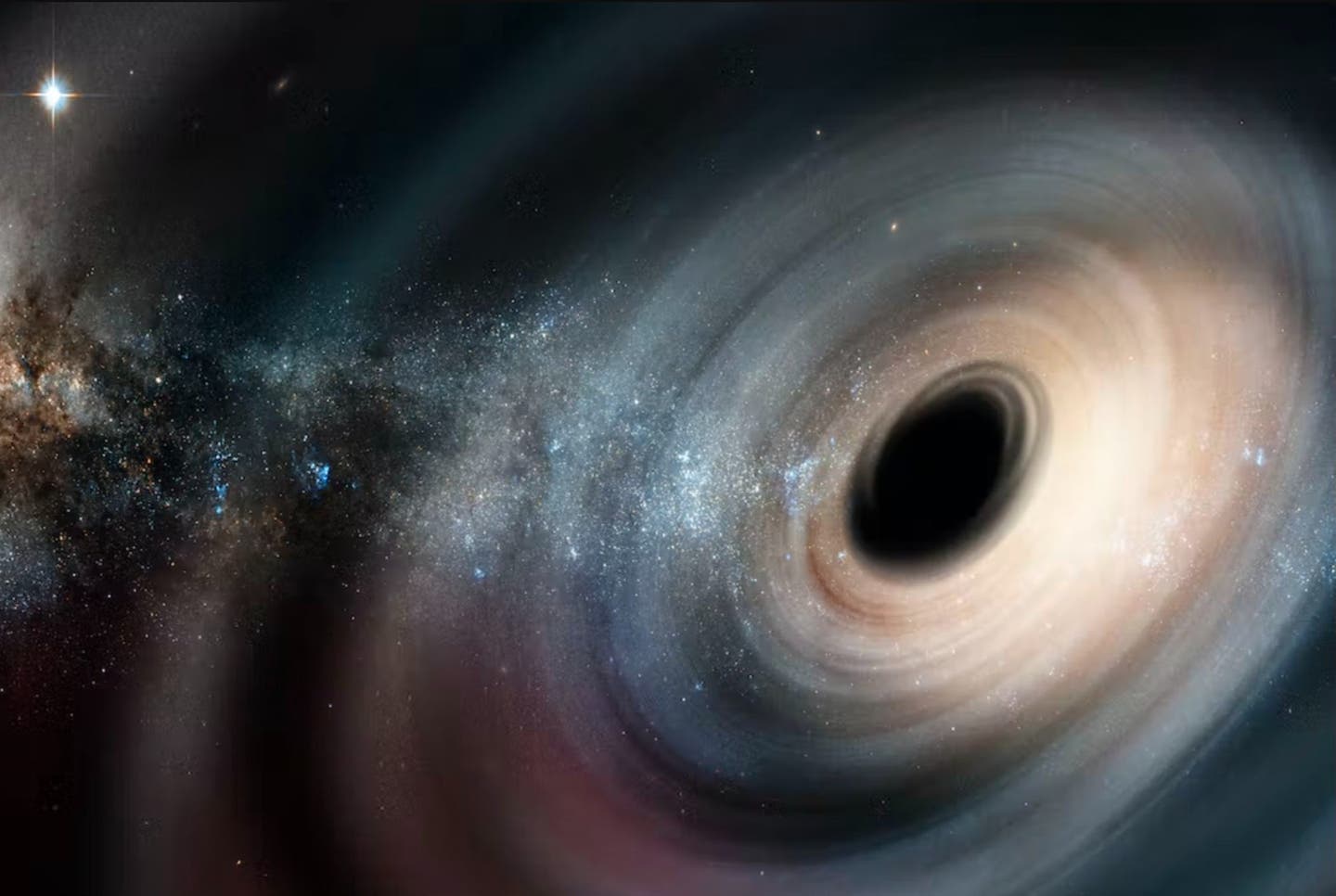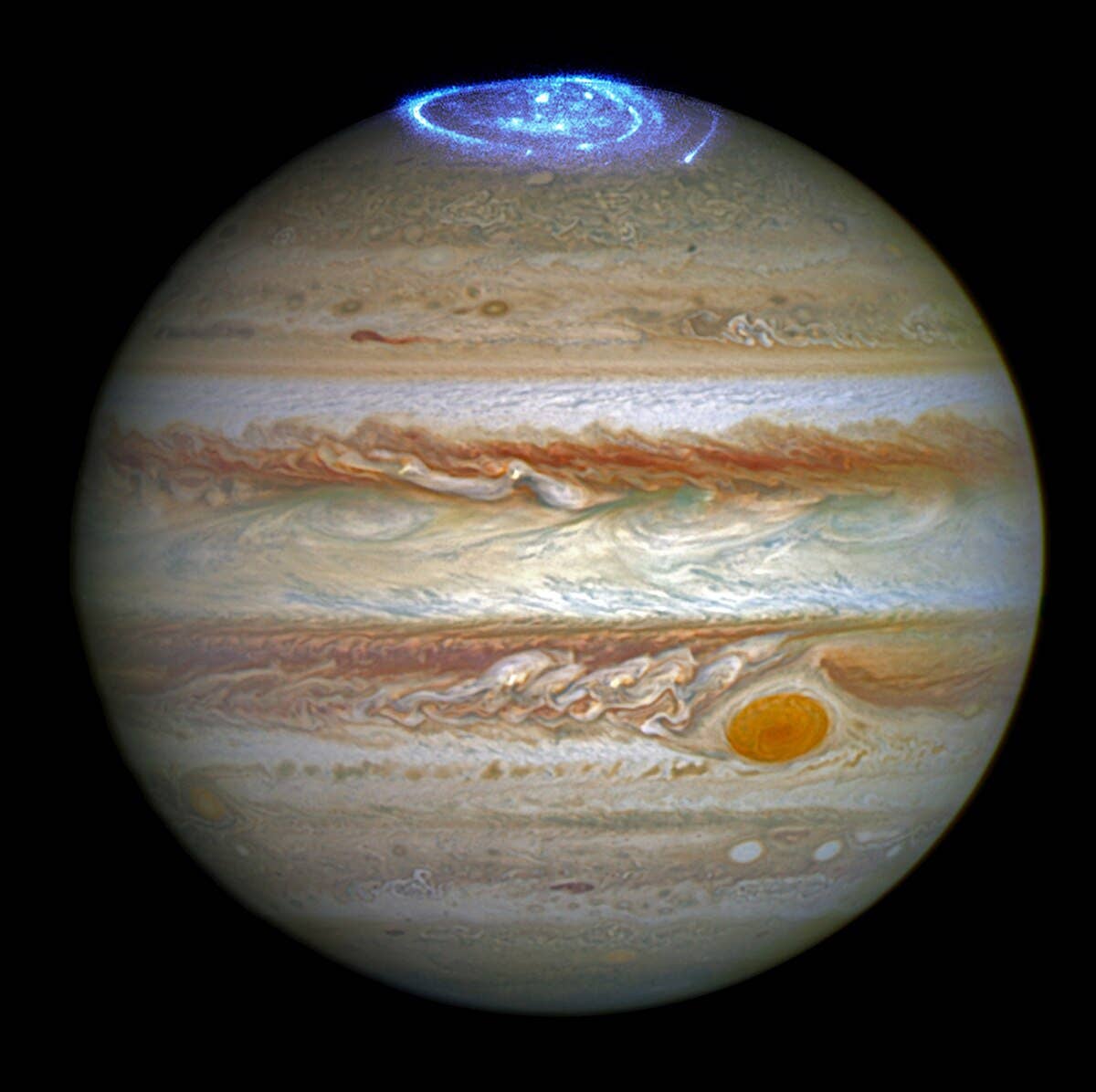Space breakthrough: Student unlocks the secret of black holes
The space and time around black holes behave oddly, causing the curvature of space to become so intense that light rays are deflected.

[Oct. 2, 2023: Staff Writer, The Brighter Side of News]
A disk of glowing gas swirls into the black hole "Gargantua" from the movie Interstellar. Because space curves around the black hole, it is possible to look round its far side and see the part of the gas disk that would otherwise be hidden by the hole. Our understanding of this mechanism has now been increased by Danish master's student at NBI, Albert Sneppen (CREDIT: interstellar.wiki/CC BY-NC License).
Black holes have always been fascinating to scientists and the general public alike. These phenomena are so mysterious that even light can't escape their gravitational pull. The space and time around black holes behave oddly, causing the curvature of space to become so intense that light rays are deflected.
This deflection has a unique property; very nearby light can be deflected so much that it travels around the black hole multiple times. As a result, when we observe a distant background galaxy or any other celestial body, we might be fortunate enough to see multiple versions of the same object.
This phenomenon, known as gravitational lensing, has been known for decades, but only recently has a new, more accurate mathematical expression been discovered.
This mathematical expression, developed by Albert Sneppen, a student at the Niels Bohr Institute, sheds light on this peculiar phenomenon and was just published in the journal Scientific Reports.
Related Stories
The mechanism of gravitational lensing is shown in the figure below. A distant galaxy shines in all directions, and some of its light comes close to the black hole and is slightly deflected. Some light comes even closer, circumvolves the hole a single time before escaping down to us, and so on. As we look closer to the black hole, we see more and more versions of the same galaxy, the closer to the edge of the hole we look.
Light from the background galaxy circles a black hole an increasing number of times, the closer it passes the hole, and we therefore see the same galaxy in several directions (credit: Peter Laursen).
The mathematical expression
The mathematical expression that describes the phenomenon of gravitational lensing has been known for over 40 years. It is a factor of 500, which means that to see the next image, we have to look 500 times closer to the black hole than the previous image. This factor is complicated to calculate, and until recently, there was no mathematical and physical intuition as to why it happened to be this exact factor.
The situation seen "face-on", i.e. how we would actually observe it from Earth. The extra images of the galaxy become increasingly squeezed and distorted, the closer we look at the black hole (CREDIT: Peter Laursen).
Albert Sneppen, using some clever mathematical tricks, has now succeeded in proving why this factor is true. "There is something fantastically beautiful in now understanding why the images repeat themselves in such an elegant way. On top of that, it provides new opportunities to test our understanding of gravity and black holes," Albert Sneppen clarifies.
This mathematical proof is not only satisfying in itself, but it also brings us closer to an understanding of this marvelous phenomenon. The factor 500 follows directly from how black holes and gravity work, so the repetitions of the images now become a way to examine and test gravity.
Simulated rays of light satisfying Eq. (3) with δ00 (right) with coloring indicating magnitude of δ0. The black hole is shaded in grey with the last photon orbit indicated with a dotted grey line. Each successive light-trajectory plotted is a factor of 2 closer to the photon capture radius with the resulting deflection angle increasing just below 40∘. Thus, the logarithmic scaling towards the photon capture radius maps to a linear evolution in ϕ. (CREDIT: Scientific Reports)
Rotating black holes
Sneppen's mathematical method can also be generalized to apply not only to "trivial" black holes but also to rotating black holes. In fact, all black holes rotate. When the black hole rotates really fast, we no longer have to get closer to the black hole by a factor of 500, but significantly less. Each image is now only 50, 5, or even down to just two times closer to the edge of the black hole.
Having to look 500 times closer to the black hole for each new image means that the images are quickly "squeezed" into one annular image, as seen in the figure on the right. In practice, the many images will be difficult to observe.
Entire (left) and zoomed-in (right) phase-space portrait for light trajectories obeying Eq. (3) with the arrows’ coloring indicating the magnitude of change (brighter hues implies longer vectors). (CREDIT: Scientific Reports)
But when black holes rotate, there is more room for the "extra" images, so we can hope to confirm the theory observationally in the near future. In this way, we can learn about not just black holes, but also the galaxies behind them.
The travel time of the light increases the more times it has to go around the black hole, so the images become increasingly "delayed." If, for example, a star explodes as a supernova in a background galaxy, one would be able to see this explosion again and again.
The implications of Sneppen's research are vast, and it is sure to inspire a new generation of scientists to explore the mysteries of the universe using the powerful tool of gravitational lensing.
For more science stories check out our New Discoveries section at The Brighter Side of News.
Note: Materials provided above by the The Brighter Side of News. Content may be edited for style and length.
Like these kind of feel good stories? Get the Brighter Side of News' newsletter.
Joseph Shavit
Head Science News Writer | Communicating Innovation & Discovery
Based in Los Angeles, Joseph Shavit is an accomplished science journalist, head science news writer and co-founder at The Brighter Side of News, where he translates cutting-edge discoveries into compelling stories for a broad audience. With a strong background spanning science, business, product management, media leadership, and entrepreneurship, Joseph brings a unique perspective to science communication. His expertise allows him to uncover the intersection of technological advancements and market potential, shedding light on how groundbreaking research evolves into transformative products and industries.



